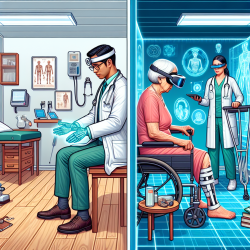Introduction
The integration of technology into healthcare is an ongoing debate, especially when it comes to the role of virtual rehabilitation. A recent research article titled "Will virtual rehabilitation replace clinicians: a contemporary debate about technological versus human obsolescence" delves into this topic, offering insights that can help practitioners enhance their skills and adapt to technological advancements.
The Debate: Technology vs. Human Touch
The article presents a debate that was inspired by a pseudo Oxford-style debate held at the International Conference on Virtual Rehabilitation (ICVR) 2019. The central question was whether virtual rehabilitation could replace human clinicians. The debate highlighted both the potential and limitations of technology in rehabilitation.
Advantages of Virtual Rehabilitation
- Cost-Effectiveness: Virtual rehabilitation can be more affordable than traditional therapy, making it accessible to a broader population.
- Remote Accessibility: Telehealth and VR allow for therapy to be delivered remotely, which is especially beneficial for patients in remote areas.
- Enhanced Engagement: VR can make therapy sessions more engaging and enjoyable, which can improve adherence and outcomes.
Challenges and Limitations
- Technological Barriers: Not all patients have access to the necessary technology or the skills to use it effectively.
- Lack of Personalization: While VR can offer standardized therapy, it lacks the personalized touch that human clinicians provide.
- Safety Concerns: Issues like cybersickness and the need for real-time adjustments are challenges that VR must overcome.
Implications for Practitioners
Practitioners can improve their skills by embracing technology and integrating it into their practice. Here are some steps to consider:
- Stay Informed: Attend conferences, webinars, and read publications to stay updated on the latest technological advancements.
- Embrace Training: Participate in training sessions to become proficient in using VR and other technologies in therapy.
- Collaborate: Work with technologists to ensure that new tools meet the needs of both clinicians and patients.
Conclusion
While virtual rehabilitation offers exciting possibilities, it is unlikely to replace human clinicians entirely. Instead, it should be viewed as a complementary tool that can enhance the quality of care. Practitioners should embrace technology while continuing to provide the personalized care that only humans can offer.
To read the original research paper, please follow this link: Will virtual rehabilitation replace clinicians: a contemporary debate about technological versus human obsolescence.










